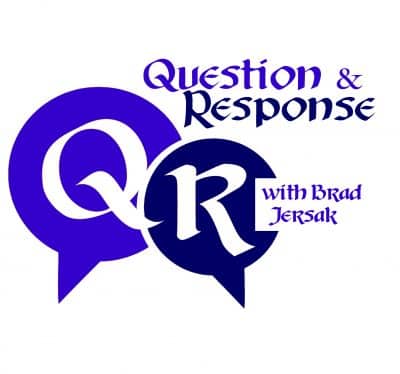Q&R: Why did Jesus only choose male disciples?

Question
Do you have any thoughts on why Jesus chose twelve men for his group, but no women in his inner circle?
Response
Excellent question! The short answer: he didn’t! What helps me most on this question is examining the way the disciples wrote each of the four Gospels, noting where they are not identical.
I. The Synoptic Gospels (Matthew, Mark, and Luke – written early and at some points similar) do identify a group of twelve men (“the Twelve”). Given the array of other disciples in Jesus’ entourage, why these twelve?
One reason made explicit in the text is that Christ is creating a conscious parallel to the twelve tribes of Israel (sort of named after Jacob’s sons). This speaks to their authority in the New Covenant people of God.
Was there also a cultural reason? As I understand it, the disciples of Jewish rabbis were always same-sex. Maybe formally naming female disciples would have seemed scandalous. But even in Luke, it’s clear that Mary and Martha and those women who were at the Cross and the empty tomb were Jesus’ disciples. And it’s not as though Jesus shied away from accusations of impropriety with women who quite literally adored him. Here’s a key text from Luke’s Gospel that looks beyond the Twelve:
- After this, Jesus traveled about from one town and village to another, proclaiming the good news of the kingdom of God. The Twelve were with him, and also some women who had been cured of evil spirits and diseases: Mary (called Magdalene) from whom seven demons had come out; Joanna the wife of Chuza, the manager of Herod’s household; Susanna; and many others. These women were helping to support them out of their own means (Luke 8:1-3).
Finally, the Synoptic Gospels seem to be establishing twelve initial evangelists who would go out two-by-two. They were specifically trained as forerunners who prepare the landscape for Jesus. Then that number was expanded to seventy-two. The seventy-two might well have included both sexes, but the text just doesn’t say.
I keep all these factors in mind when reading the Synoptic Gospels. And that’s aside from the fact that even the Synoptics have slightly different lists of who the Twelve were. But then I come to the Gospel of John and I see a completely different story.
II. In John’s Gospel, the twelve are only mentioned in chapter 6 and then once in chapter 20. “The Twelve” in John appear to be just one of Jesus’ circles (plural), and among these, we definitely have mixed groups of males and females. One example is the siblings from Bethany (Mary and Martha, along with their brother). Another is Mary Magdalene and her group of myrrh-bearing women.
Even some key men Nicodemus, Lazarus, were probably not among the Twelve. And even more striking, perhaps not even the author of the fourth Gospel! John Behr argues convincingly in his book, John the Theologian and His Paschal Gospel, that John the Beloved was a different individual than John of Zebedee! Possible!
I think John’s portrayal of Jesus’ varying and mixed discipleship circles is notable and purposeful. Is it because he wrote from Ephesus? Certainly his use of Jewish feasts and especially Passover indicates some Jewish readership. But would a mixed audience in Ephesus that included cosmopolitan women and Gentiles shaped his way of framing discipleship for John’s readers? Remember Jesus’ mother, the woman at the well, the woman caught in adultery, the woman who anointed him despite Judas’ objections, and the women at the Cross! John’s Gospel provides a stable foundation for the inclusion of female disciples in Jesus’ inner circles.
As I consider the data carefully, I wouldn’t say too much from silence, but the central role of key women in all four Gospels is not at all silent, regardless of some unique role among the twelve.










 Plain Truth Ministries | Box 300 | Pasadena, CA 91129-0300
Plain Truth Ministries | Box 300 | Pasadena, CA 91129-0300

